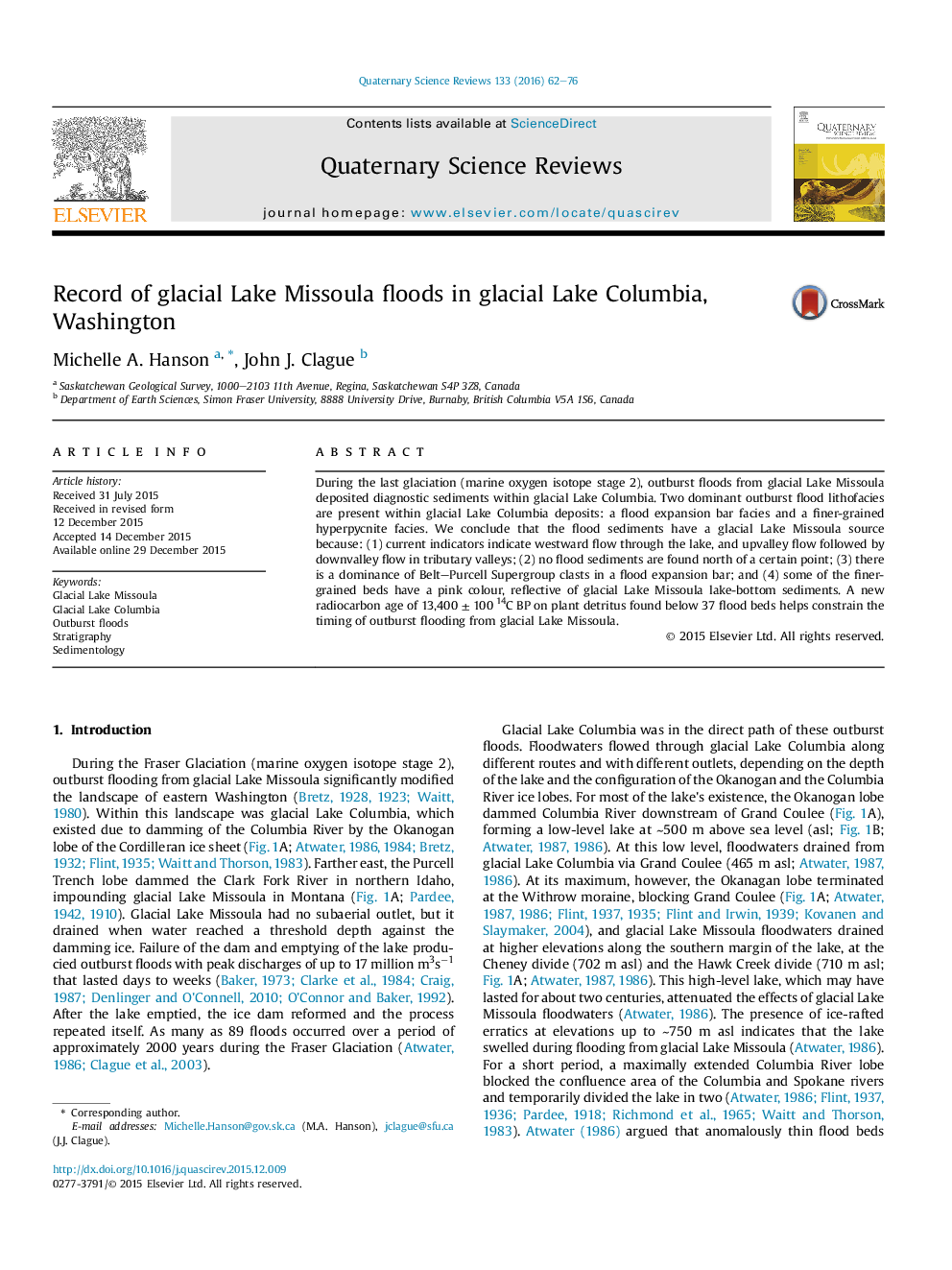| Article ID | Journal | Published Year | Pages | File Type |
|---|---|---|---|---|
| 6446143 | Quaternary Science Reviews | 2016 | 15 Pages |
Abstract
During the last glaciation (marine oxygen isotope stage 2), outburst floods from glacial Lake Missoula deposited diagnostic sediments within glacial Lake Columbia. Two dominant outburst flood lithofacies are present within glacial Lake Columbia deposits: a flood expansion bar facies and a finer-grained hyperpycnite facies. We conclude that the flood sediments have a glacial Lake Missoula source because: (1) current indicators indicate westward flow through the lake, and upvalley flow followed by downvalley flow in tributary valleys; (2) no flood sediments are found north of a certain point; (3) there is a dominance of Belt-Purcell Supergroup clasts in a flood expansion bar; and (4) some of the finer-grained beds have a pink colour, reflective of glacial Lake Missoula lake-bottom sediments. A new radiocarbon age of 13,400 ± 100 14C BP on plant detritus found below 37 flood beds helps constrain the timing of outburst flooding from glacial Lake Missoula.
Related Topics
Physical Sciences and Engineering
Earth and Planetary Sciences
Geology
Authors
Michelle A. Hanson, John J. Clague,
